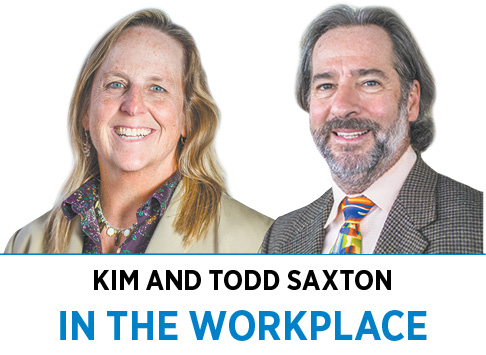Subscriber Benefit
As a subscriber you can listen to articles at work, in the car, or while you work out. Subscribe Now To state that these are uncertain times does not even begin to do justice to the challenges we face as a society. And just as we start to settle into what we think a “new normal” might be, shifts destabilize us again. Daily, we have to focus on the Now and respond to each new issue. Recovering socially and economically is going to take more systematic and strategic decision-making as we prepare for the Next.
To state that these are uncertain times does not even begin to do justice to the challenges we face as a society. And just as we start to settle into what we think a “new normal” might be, shifts destabilize us again. Daily, we have to focus on the Now and respond to each new issue. Recovering socially and economically is going to take more systematic and strategic decision-making as we prepare for the Next.
Let’s start by making sure we all understand uncertainty—a state of limited knowledge where it is impossible to exactly describe what’s happening in the Now or predict the possible future outcomes in the Next. In risky situations, on the other hand, the outcomes—both good and undesirable—are known and probabilities can be calculated. Dice and cards, for example, are games of risk. Decision-making today is hard, because our future is both risky and uncertain.
The brain deals with risky and uncertain situations differently. Researchers use functional magnetic resonance imaging, or fMRI, to see how the brain responds to different kinds of inputs. People are given various tasks, and the fMRI measures what parts of the brain show activity. Risk fires the logical, cognitive left side of the brain associated with reward-seeking. Uncertainty, on the other hand, fires both sides of the brain. This means that people are integrating both rational and emotional aspects, with a possible “flight or fight” reaction.
Given the uncertainty, good decisions today need to incorporate farsighted thinking (the Next) versus narrowband thinking (the Now). In his similarly titled book, Steven Johnson shares that farsighted decisions are those that require significant effort across multiple fronts. These complex decisions require a thoughtful and intentional process to increase the odds of having a favorable outcome.
Johnson uses the history of lower Manhattan in New York City as a cautionary tale. Centuries ago, this was where spring-fed fresh water sustained animals and Native Americans. The pond was bordered by a large, beautiful bluff which enabled a nice view of the entire landscape.
As New York became a city, the pond attracted tanneries, a slaughterhouse and other industry. Sadly, those industries contaminated the water with chemicals and decaying bodies. Local decisionmakers converted the land into real estate by leveling the bluff and filling in the pond. Middle class housing was built on the area. In the Now, this decision generated economic benefit for some and housing for others, but it destroyed an ecosystem. This benefit was short-lived. The houses sank due to the decaying foundation, noxious gases escaped from the ground and the residents fled, leaving a desolate area known as Five Points. Choosing economic benefits in the Now created a long-term loss in the Next.
We are faced with similar challenges today. How do we wisely reengage in the economy, rebuild in a more equitable fashion and heal and prosper? We need to balance activity today in the Now with the Next, the future state we want to get to. And we have to build the navigation plan to move from the Now to the uncertain Next. This is hard work and requires good decisions.
Decades of research shows that good, farsighted decisions happen in stages. A sound decision-making process starts with an early divergent stage through brainstorming, scenario mapping and creative exploration. The goal in this stage is to generate as wide an array of solutions as possible without judging their viability or sustainability.
This involves incorporating diverse perspectives. At a minimum, this should include demographic diversity. But it also requires a diversity of perspectives from functional knowledge via experts to stakeholders at multiple levels with a range of backgrounds. Diverse teams are simply better at generating solutions to complex problems.
As this process unfolds and diverse solutions are identified, good decision-making then moves into a consensus stage. This is when team members agree to a path and move into implementation mode. And notice we said “team.” Good decision-making is not an individual sport. The team also monitors metrics, including outcomes and additional variables, that might cause the desired solution to pivot or reset.
The unfolding is often neither linear nor inevitable. But the process reassures participants and balances parts of the brain, avoiding the “fight or flight” reaction.
Making good decisions is fundamental to any good business. While current times are particularly challenging, establishing a process for good decision-making is a priority for startups and small businesses as well as larger and established companies.
Hopefully, this gives you a starting point for tackling the Next while still managing the Now. Don’t let navigation errors sink your long-term success. Be farsighted!•
__________
Todd Saxton is associate professor of strategy and entrepreneurship and M. Kim Saxton is clinical professor of marketing at the IU Kelley School of Business at IUPUI. The Saxtons are co-authors of “The Titanic Effect: Successfully Navigating the Uncertainties that Sink Most Startups.
Please enable JavaScript to view this content.
